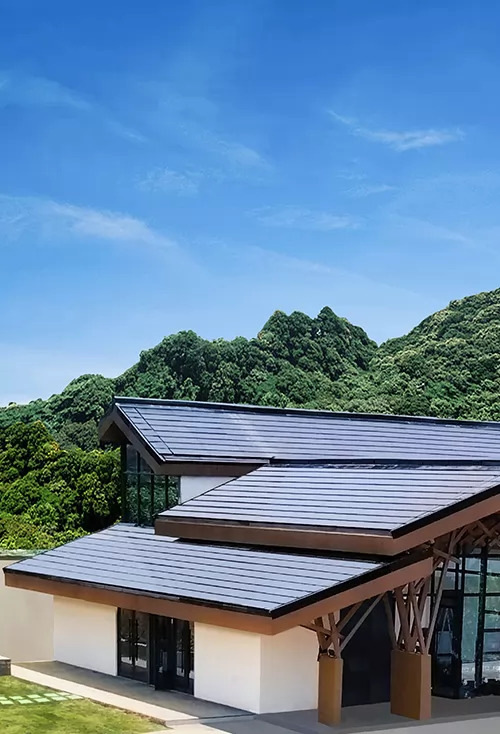Apr. 06, 2024
Whether a roof is suitable for solar panels depends on several factors, including its orientation, slope, shading, materials, and structural integrity. Here are some considerations for determining the best type of roof for solar panels:
Orientation and Slope: The orientation and slope of your roof play a vital role in maximizing solar energy production. In the Northern Hemisphere, south-facing roofs receive the most sunlight throughout the day, making them ideal for installing solar panels. Slopes between 15 and 40 degrees are best for efficiently capturing sunlight. However, east- or west-facing roofs can still have solar panels installed, albeit with slightly less efficiency. Factors such as local climate and shading patterns should also be considered when evaluating roof orientation and slope.If you need to order solar panels, please contact Gain Solar.

Shading: Shading can severely impact the performance of solar panels, reducing energy production and efficiency. Trees, nearby buildings, or other obstructions that cast shadows on your roof should be carefully evaluated. Prior to installation, conduct a shading analysis to identify potential shading issues throughout the day and year. Strategies such as pruning trees, repositioning panels, or using microinverters can help mitigate shadowing effects and maximize sunlight exposure.
Material Compatibility: Solar panels can be installed on a variety of roofing materials, including asphalt shingles, metal roofs, shingle roofs, and flat roofs. While most roofing materials are compatible with solar panels, some may require specialized mounting hardware or installation techniques. The weight, texture, and durability of the roofing material must be considered to ensure proper installation and long-term performance. Consult a solar installer to determine the best mounting solution for your specific roof type.
Structural Integrity: Installing solar panels adds weight to your roof, so it’s critical to evaluate your roof’s structural integrity to ensure it can support the additional load. Older roofs or roofs in need of repair may need to be reinforced before solar panels can be installed. Consult a structural engineer or roofing professional to evaluate your roof's capacity and any necessary reinforcements. Strengthening measures such as roof trusses, support beams, or additional framing may be required to ensure safety and stability.
Accessibility and Maintenance: Consider accessibility for roof installation, maintenance, and potential repairs. Roofs with easy access and ample operating space are best for solar panel installation and future maintenance. Ensure that vents, chimneys, and other roof features do not impede panel placement or impede maintenance activities. Additionally, consider the warranty and longevity of your roofing materials to minimize the need for future repairs or replacements.
Code Compliance and Aesthetics: Check local building codes, zoning regulations, and homeowners association rules regarding solar panel installation. Some areas may have specific requirements or restrictions for rooftop solar panel installations, such as setback distances, installation permits, or aesthetic guidelines. Make sure to comply with local regulations and obtain necessary approvals before installation. Also, consider the aesthetic impact of solar panels on the appearance of your roof and how they fit into the overall design of your home or building. Choose panel colors, mounting systems, and placement options that complement the architectural style and enhance curb appeal.
1. Asphalt shingle roof
The most common type of roof, with strong adaptability.
The cost of installing a bracket system is relatively low.
2. Metal roof
It is durable, and some standing seam metal roofs can be installed with solar brackets without drilling holes.
It reflects heat, which helps to improve energy efficiency, and is particularly suitable for installing solar panels for industrial or commercial buildings.
3. Flat roof
The bracket tilt can be adjusted according to the best angle of the sun, and the space utilization is high.
But you need to consider that the bracket system may require additional costs to ensure stability, and additional considerations need to be made for drainage and snow accumulation.
4. Ceramic or clay tile roof
The installation is more complicated, and you may need to handle the tiles with extra care to avoid damage, and the installation cost may be higher.
5. Concrete roof
The structure is strong and can withstand the weight of solar panels, suitable for installing heavy brackets and large systems.
6. Wooden roof
Wooden roofs are generally not recommended for direct installation of solar panels because they are flammable and have limited load-bearing capacity.
Except for wooden roofs, modern building roofs basically meet the conditions for installing solar panels. You don't have to worry about whether your roof structure can be installed with solar panels. If you want to install solar roof tiles for your home, you can click here to consult professionals.
In summary, choosing the best type of solar panel roof requires careful consideration of orientation, shading, material compatibility, structural integrity, accessibility, code compliance, and aesthetics. By evaluating these factors and consulting with a solar professional, you can make informed decisions that maximize energy production, ensure safety and durability, and enhance the visual appeal of your solar-powered home or building.